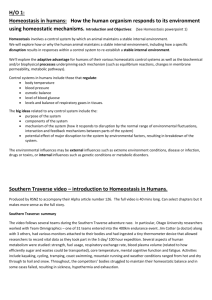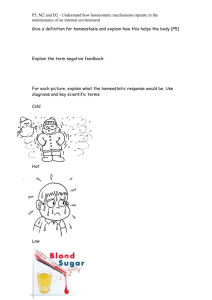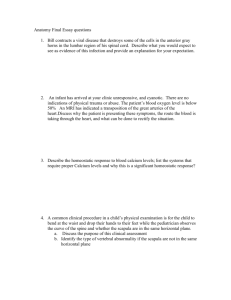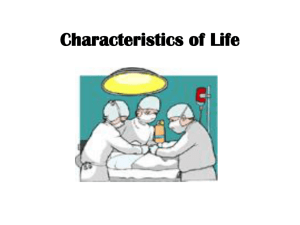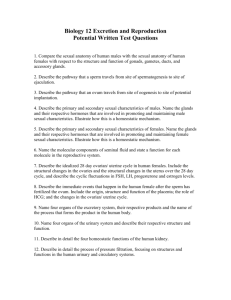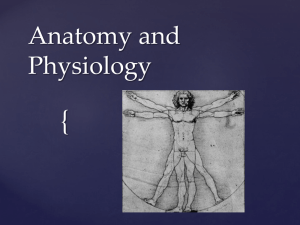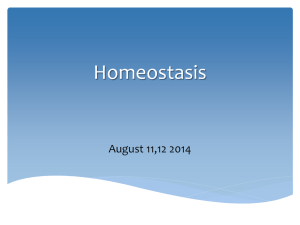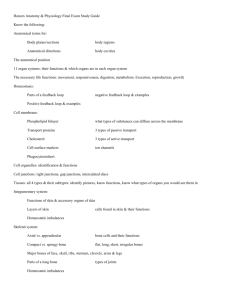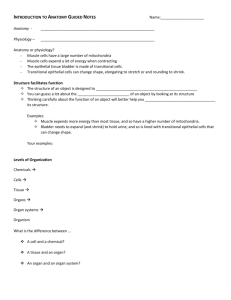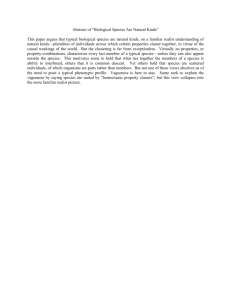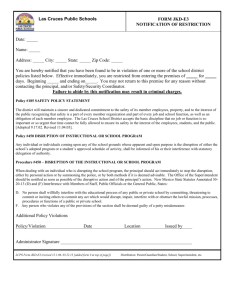Powerpoint 1 Intro to Homeostasis
advertisement
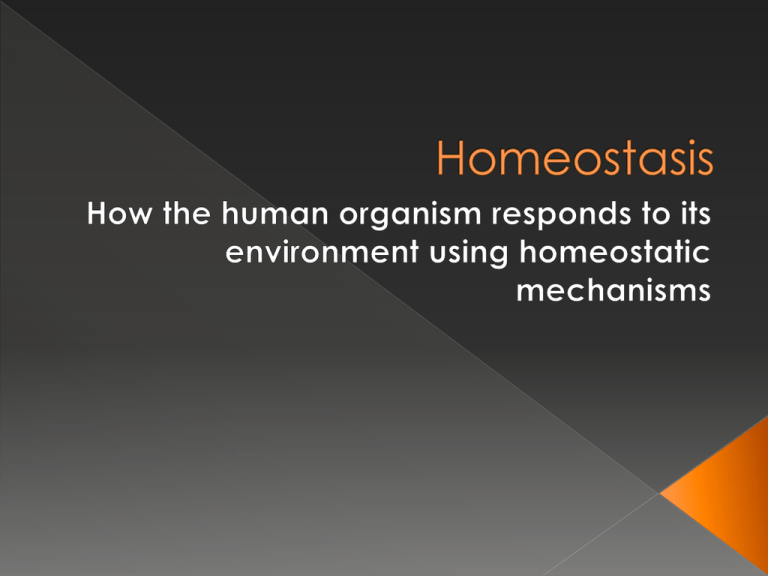
homeo = same or unchanged › stasis = to remain still or steady › Greek homoio-, combining form of hómoios similar, like Greek, from sta- base of histanai 'to stand‘ - a period or state of inactivity or equilibrium involves a control system by which an animal maintains a stable internal environment, despite fluctuations in their environment. To find out how homeostasis works: To explore how and why the human animal maintains a stable internal environment, including how a specific disruption results in responses within a control system to reestablish a stable internal environment the adaptive advantage for humans of their various homeostatic control systems the biochemical and biophysical processes underpinning each mechanism › (e.g. equilibrium reactions, changes in membrane permeability, metabolic pathways). What happens when the control system breaks down completely due to extreme environmental factors? › ie when the control system cannot re-establish the homeostatic balance body temperature blood pressure osmotic balance level of blood glucose levels and balance of respiratory gases in tissues. What environmental factors might affect the homeostatic control system? External influences such as: › exposure to extreme environmental conditions , › disease or infection, › drugs or toxins, Internal influences such as: › genetic conditions or metabolic disorders purpose of the system components of the system mechanism of the system (how it responds to being disrupted within a normal range of environmental fluctuations) possible effect of extreme disruption to the system by internal or external influences, resulting in its breakdown.
